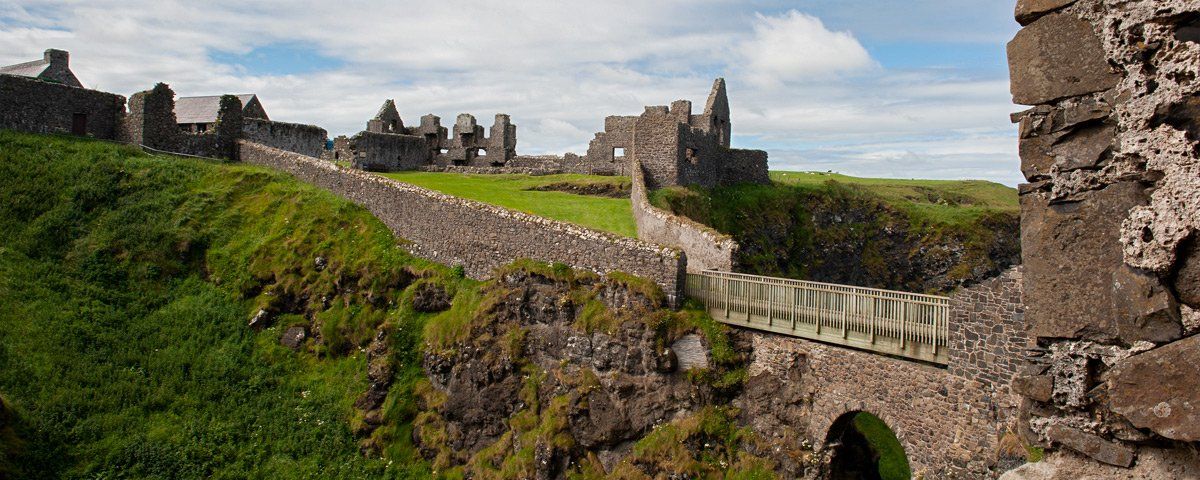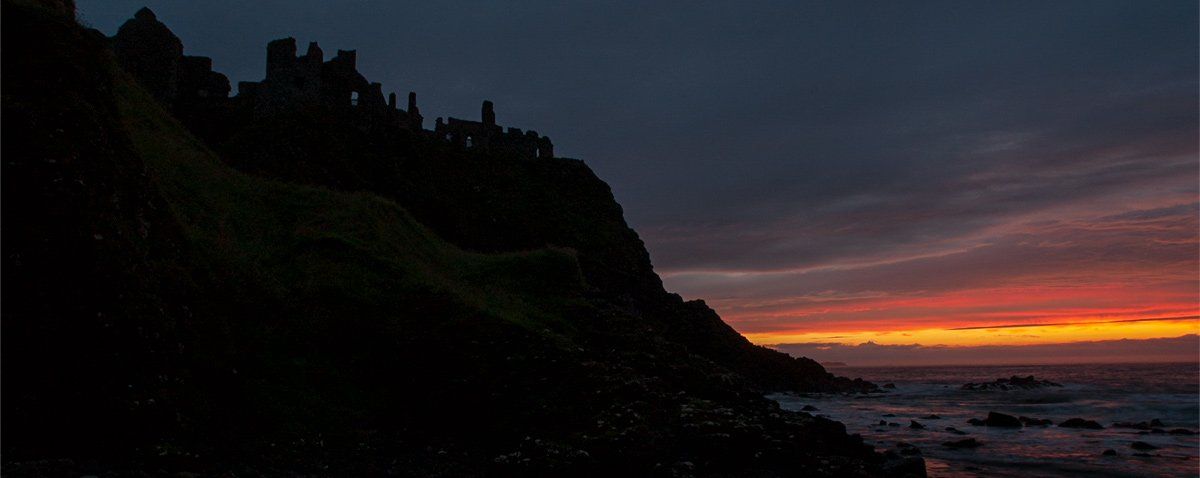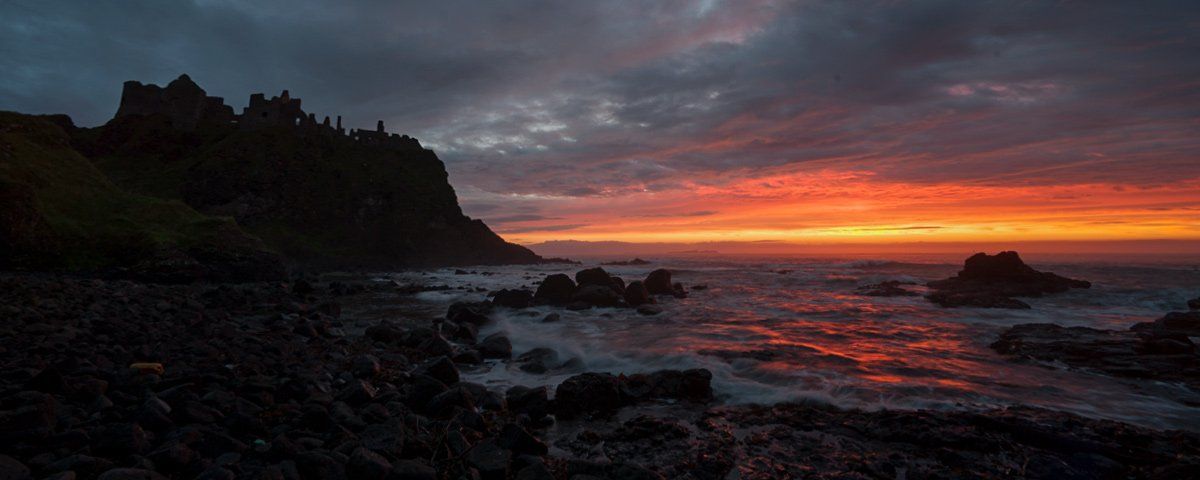Castle History
Dunluce Castle is mentioned in the fourteenth century as one of the properties of de Burgo or de Burgh in the Earldom of Ulster, it was probably built in the 13th century, if not by Richard de Burgh or John de Courcy then by one of their chief followers such as the De Maundevilles. All of Norman descent, another name which crops up in connection to the castle is MacEoin who were the Byset clan (Bisset), they owned the Gynns and were part of the Norman hierarchy. The MacQuillan's are said to have connections with the De Maundevilles and may indeed be that family under a new name but they are recorded as one of the key owners of Dunluce until it was taken from them by the MacDonnell's in the 1500s.
Both clans were one time allies but changing allegiances create a power struggle between them which continued on and off until the Battle of Slieve-na-Aura in 1583. This confrontation redefined the power structure in Ulster and Dunluce became the main MacDonnell castle along the north coast. Hugh MacFelim O'Neill, Rory MacQuillan and Captain Thomas Chatterson were killed at the battle which had been planned by them to remove the MacDonnell's. Sorley Boy MacDonnell knowing the glens well had made his way at night up through Glendun and positioned his forces on firm ground surrounded by bogland which they covered with rushes. When the horses and foot soldiers charged they ended up in the boggy ground and became easy victims to the lighter equipped MacDonnells.
A traditional local saying goes - 'There's been nobody fooled by a rush bush but a MacQuillan'. There are references to Sorley Boy MacDonnell flying, much to the displeasure of Queen Elizabeth 1st, a battle standard captured after a skirmish with the English, he is also reputed to have mounted four cannons salvaged from the Girona along the castle walls. The Girona was a galleass of the Spanish Armada which foundered on Lacada Point at the Giant's Causeway in 1588, local folklore tells of victims being buried in St. Cuthbert's graveyard in nearby Dunluce Castle. The MacDonnell's held a 'St Columcille Cross' named after the Irish saint, this was taken along with other valuables by Sir John Perrott who took the castle on instructions from Queen Elizabeth in 1584.
He occupied the castle for a year before leaving, after which it was retaken by the MacDonnell's. Sorley Boy eventually went to live at Dunaneenie, Ballycastle and the castle went to his son Randal MacDonnell. Randall set about restoring the castle and built a lavish manor house within the castle walls. His son, also Randall, married the widow Lady Katherine Manners, daughter of the Earl of Rutland. Her husband George Villiers, the Marquess of Buckingham was shot in Portsmouth by a naval officer called John Fenton. Dunluce Castle became their residency, an inventory dating from this period shows that the castle was indeed a fine residence. The Earl and Countess of Antrim frequented the royal court in London where they acquired many of their possessions.
There were said to have been tapestries and exquisite curtains including a set which had belonged to Cardinal Wolsley at Hampton Court. The inventory lists six sets of chairs of state, which would have been placed under an elaborate canopy. Sixty other elaborately upholstered chairs and stools and a library of books. There were saddles worked with gold and silver, finely inlaid cabinets and valuable objects such as telescopes, celestial and terrestrial globes. The most valuable listings are the priests vestments. The Countess is credited with renovating St. Cuthbert's Church (nearby to the castle) it was originally thatched and is recorded as having a lavish interior which included the signs of the zodiac painted in the ceiling plaster.
In 1639, while the Earl and his Countess were at home, part of the castle fell into sea, a significant part of the castle directly above the entrance to the mermaid's cave and with exceptional views over the ocean, stories that it was the kitchen may be slightly exaggerates as the kitchen still exist within the ruins, the vanished rooms may have been guests or summer rooms used by the occupants. The 1641 rebellion saw the castle besieged by an Irish army, the surrounding village was burnt, the castle held out under the command of a Captain Digsby and was relieved by the Earl. Most of the Scottish settlers and merchants escaped to Scotland before the village was destroyed by fire.
Oliver Plunkett, the Archbishop of Armagh who had been recently canonized, was a visitor and described it as a 'palace washed on all sides by the sea'. The Battle of the Boyne in 1690 had repercussions for the MacDonnells who had supported the cause of the deposed King James II. Dunluce Castle was abandoned and Ballymagarry House nearby became the Earl's main residence, part of its structure and garden walls are still standing. A barn survives with massive oak beams said to have come from Dunluce Castle after it was deserted. Ballymagarry was destroyed by a fire in 1745 after which Glenarm Castle became the principal seat of the Earl of Antrim and the MacDonnell clan.







